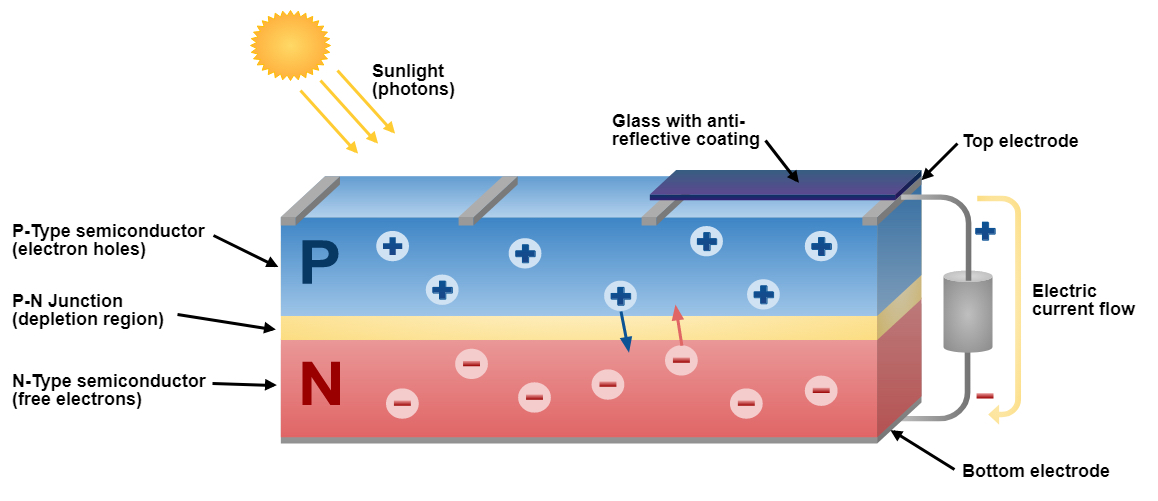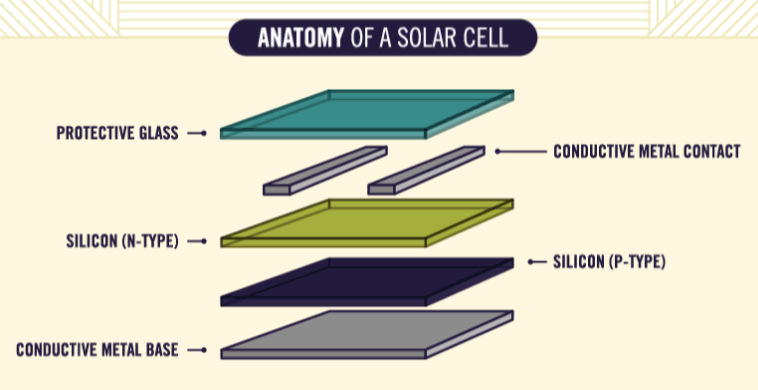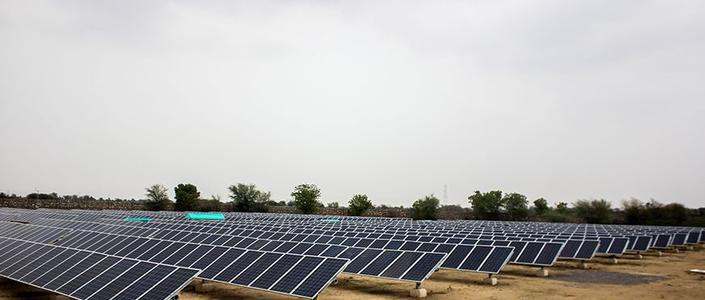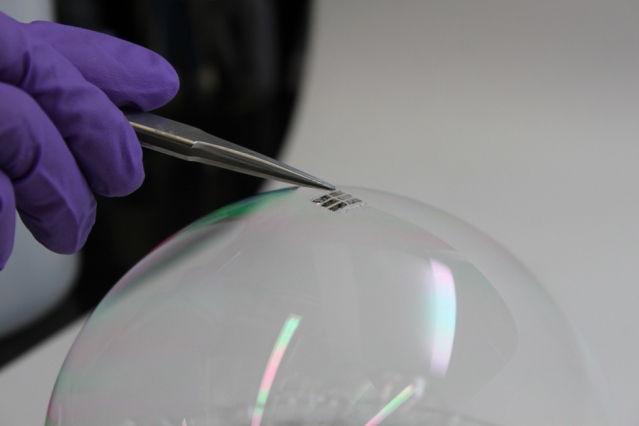Solar panels work by allowing photons (particles of light) from sunlight to knock electrons free from atoms. Silicon on its own cannot carry an electric current, that's why silicon found in solar particles is impure and combined with phosphorous. When combined with phosphorus the electrons can be delocalised free to carry the electrical charge. This process of adding impurities is called doping.

The result is what is known as N-type silicon and its what you find on the surface of solar panels. Below that layer of N-type silicon resides its mirror opposite: P-type silicon. P-type uses impurities from elements like gallium or boron with means the material has space for other electrons. This creates an electrical magnetic field where the upper N-type silicon layer is negative, and the P-type silicon is positive. Electrons are knocked free from atoms in the N-type layer and move towards the p—type layer to fill the empty electron spaces. The flow of electrons creates electricity.
What makes up a solar panel?
Solar panels are made from layers of silicon. Silicon forms a hard and brittle crystalline structure and is the second most abundant element on earth. This semi-conducting material it can be grown, and scientist grow silicon in a tube as a single, uniform, crystal. They then unroll the tube and cut the sheet into 'wafers' making them as thin as possible. Most solar panels have efficiency between 10 to 20 percent. A decade ago solar panels had efficiency levels at around 13%. In 2019 it has risen to 20%. The upper limit of silicon is 29% due to the nature of silicon.

For future solar cells to replace current solar cells then they must be able to capture more light, more efficient in transforming light into energy, and less expensive to build than current designs.
The first option for improving solar cells would be adding hardware that would allow them to capture more light, which means we do not need to abandon current solar cell designs. Electronics can be installed within solar cells that allow them to track the sun as it moves through the daytime sky. If solar cells are always pointing towards the sun, then it would allow more light to hit the solar cells and in turn more power can be produced. Currently designing electronics that can carry out this function is an ongoing challenge, but innovation on this front continues. Alternatively, instead of making solar cells move we can install mirrors to focus light onto a smaller, therefore cheaper solar cell.
Another route to improving the performance of solar cells is to target their efficiency. Solar cells with more than one layer of light-capturing material can capture more light. Recently, lab-tested solar cells within four layers can capture light with 46% efficiency. These cells are still mostly too expensive and difficult to produce for commercial use, but ongoing research may make this these super-efficient cells the new norm one day.

In the immediate future, silicon solar cells are likely to continue to decrease in cost which will make them more accessible to more people in the future especially in developing countries. In the United States, the cost decreases are predicted to increase the solar power produced by 500% by 2050. Theoretically to power the whole world as we know it now, we need 4,000,000 square meters of solar cells. To put that into perspective, the Sahara Desert is 3,600,000 square meters.
Solar power has a lot of potential, most countries that are still lacking in electricity are hot sunny countries. For these countries to adapt solar energy would be a lot more efficient, safer and cleaner than say kerosene. However, it is unlikely that we will ever see countries in Europe solely rely on solar power, due to a lack of consistent sunlight during the day.

Years from now, we are likely to see alternatives to silicon appearing on our rooftops and solar farms, helping to provide clean and renewable sources of energy. We will also see increased bulk manufacturing of solar cells and new technologies that will make the cells cheaper and more efficient.











 English
English Español
Español Français
Français Português
Português Deutsch
Deutsch عربى
عربى ไทย
ไทย Indonesian
Indonesian